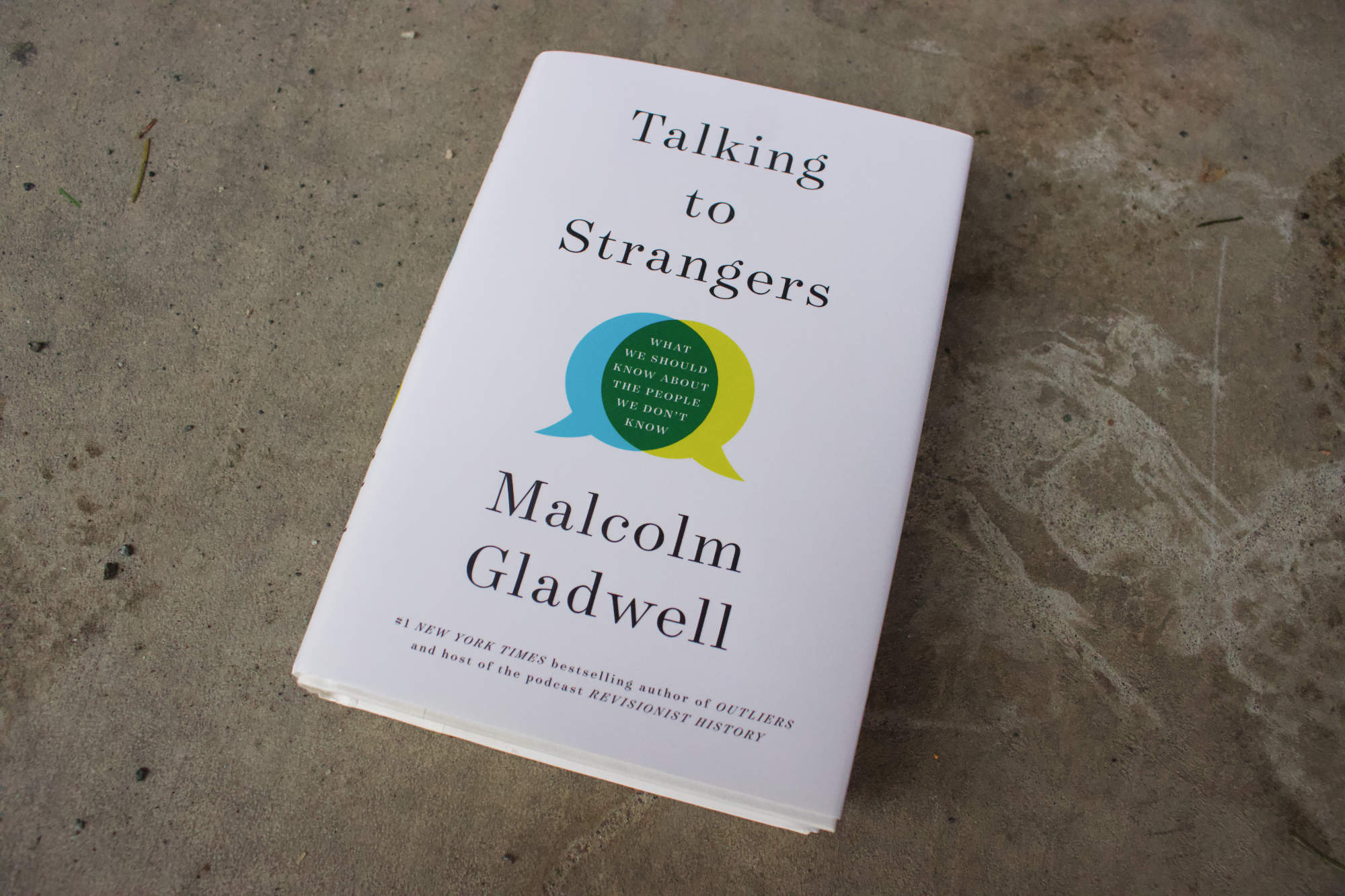Malcolm Gladwell’s most recent entry into the writing world revolves around how we understand strangers. To get to the end quickly, we’re really bad at it. Gladwell starts off the book with the Sandra Bland case. If you’re not familiar with this case, it started as a fairly basic traffic stop where an warning was going to be issued, and ended with a woman committing suicide after three days in jail.
Prompted by this Gladwell wanted to know why we’re so bad at reading the intentions of strangers.
To start the book he introduces us to two puzzles.
> Puzzle Number One: Why can’t we tell when the stranger in front of us is lying to our face?[^1]
> Puzzle Number Two: How is it that meeting a stranger can sometimes make us worse at making sense of that person than _not_ meeting them?[^2].
One of the answers to the above puzzles is that we default to truth[^3]. That is when someone talks to us we assume that they are telling us the truth. This is a good thing because in our day to day interactions lies are so rare[^4]. We don’t doubt the math of the cashier at the coffee shop, which we’d have to do all the time if we didn’t default to truth.
A second answer to these puzzles is that we assume transparency.
> Transparency is the idea that people’s behavior and demeanor — the way they represent themselves on the _outside_ provides an authentic and reliable window into the way they feel on the _inside_.[^5].
While we feel that transparency is indeed true, it’s not. We don’t have any insight into the what a stranger’ s formative experiences were. They may express emotion in a way that’s entirely foreign to us so we may read it wrong. The transparency we assume seems to be mostly a product of TV and movies[^6], we simply assume that what we see there is what is true in the world.
When someone is mismatched, their outward emotional state doesn’t match their inner feelings, we are terrible at reading them. That’s not just you and me, but trained police and interrogators are terrible as well[^7].
Here Gladwell takes a bit of a detour to show us how bad matching can be as he looks at college drinking and sexual assault. While he works to be sensitive to anyone that’s been a victim, he does point out that when drinking we are terrible at being matched, and terrible at reading emotions. Above a certain alcohol blood content we are “blacked out” in that we are forming no new memories and we can’t think of anything but the moment. This is why someone at a party in a relationship may agree to go home with someone else, all the can think about is the exact moment they’re in. They have no capacity to think of any future consequences of their actions.
After this Gladwell looks at his final main point, behaviours are coupled. They are tied to a specific place and time. He cites interesting research than in any city 50% of crimes are committed or 3% – 5% of streets[^8]. Not a neighbourhood, but a specific street in that area. Also contrary to the beliefs of many, crimes are not really displaced[^9], they don’t just move a street over. They’re specifically coupled to an area for a person.
So after all this research, and many interesting stories, where does Gladwell end up? Well his last sentence of the book sums up what you can take away from the book.
> Because we do not know how to talk to strangers, what do we do when things go awry with strangers? We blame the stranger.[^10]
I guess if you recognize that above three issues, default to truth, transparency, and coupling, you might be better equipped to check your beliefs and get to know a stranger for real, but I don’t know that this is certain.
Probably the best takeaway is for college students to stop drinking so much so that they don’t do stupid stuff. This is hardly revolutionary insight, though it is interesting to note that the “warm up” of today’s college student heavy drinkers was the full night of drinking for 1950’s era college students[^11].
## Should You Read Talking to Strangers by Malcolm Gladwell?
While I found the book interesting, I have a hard time coming up with a solid recommendation that you need to read this book. I really only consists of the three points I’ve highlighted and comes to no helpful conclusion so that you can improve your talking to strangers. 80% of the book is stories, which while interesting are in many ways filler.
I feel like this book could have been done in half as many pages and still been a decent read.
So…maybe you should read this. If you like Gladwell’s style (which I generally do) then it’s an interesting book. Just don’t expect to have some huge epiphany about how to improve your interactions with strangers outside of monitoring how much you drink.
[Purchase Talking to Strangers on Amazon](http://www.amazon.com/dp/0316478520/?tag=blogcurtismchale-20)
[Purchase Talking to Strangers on Book Depository](https://www.awin1.com/cread.php?awinmid=5478&awinaffid=674023&clickref=&p=%5B%5Bhttps%253A%252F%252Fwww.bookdepository.com%252FTalking-Strangers-Malcolm-Gladwell%252F9780241351567%5D%5D)
[^1]: Page 27
[^2]: Page 43
[^3]: Page 73
[^4]: Page 100
[^5]: Page 152
[^6]: Page 162
[^7]: Page 183
[^8]: Page 284, 285
[^9]: Page 273
[^10]: Page 346
[^11]: Page 221
